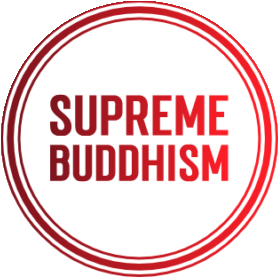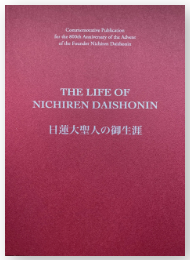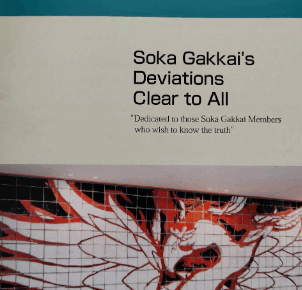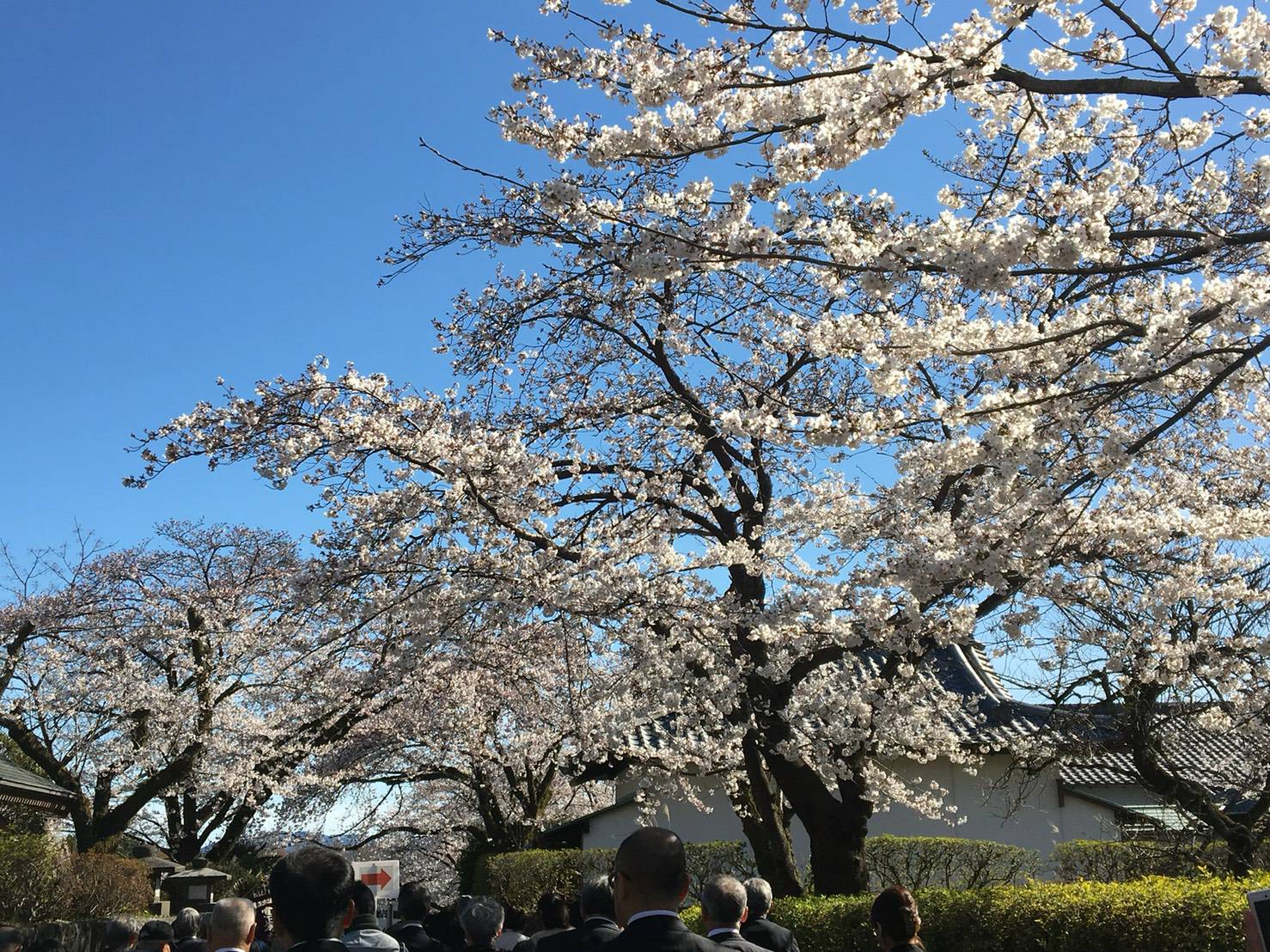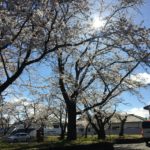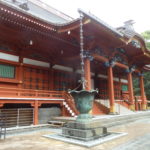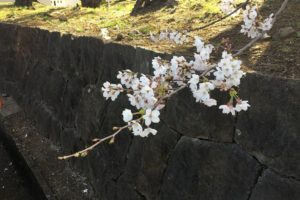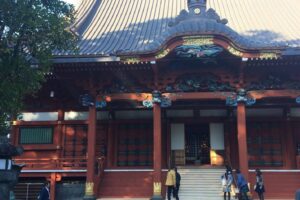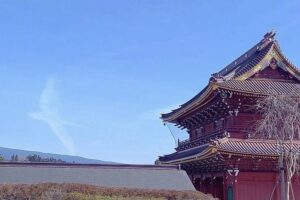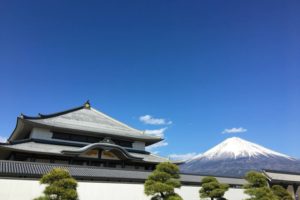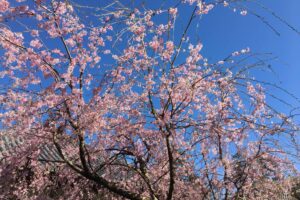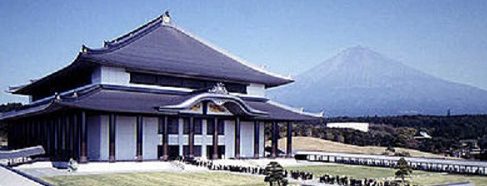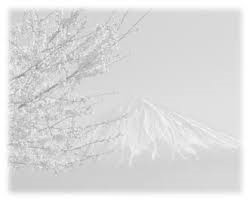The Second Level of the Fivefold Comparison
Within the Buddhism of Nichiren 1 Daishonin, the Five-Fold Comparison [Five successive levels of comparison established by Nichiren Daishonin in Kaimoku-sho to demonstrate the superiority of Nam Myoho Renge Kyo] is used as one of the criterion to judge the correctness of a religion.This month I would like to lecture on the Comparison between Mahayana and Hinayana Buddhism.
The previous lecture on the Comparison between Buddhism and non-Buddhist teachings discussed the superiority and correctness of Buddhism over the various teachings Through other comparison, it was verified how, superior Buddhism was to non-Buddhist teachings.However, once within all of the Buddhist teachings, the teachings are further broken down and critically compared through the judgement rendered by bringing forth this is an expedient means to conclusively bring forth the teachings of the Buddhism of sowing (Nichiren Daishonin ‘s Buddhism which reveals the Law of Nam Myoho Renge Kyo] hidden in the depths of the Juryo Chapter of the Lotus Sutra.
First of all, within Buddhism, all of Shakyamuni’s teachings can be largely classified into Mahayana and Hinayana Buddhism.When Mahayana and Hinayana Buddhism is compared, it is obvious that Mahayana Buddhism is clearly superior.Now then, why was
this inferior teaching of Hinayana expounded? There exists a profound premise for why Hinayana Buddhism was expounded. Within the sutra, there is a doctrine for the teachings. During the time when Shakyamuni was expounding the Hinayana teachings, other religions and teachings Had already infiltrated and spread. Within the teachings of these religions, there is also its own doctrines. Shakyamuni in order to refute the doctrine of these other religions, expounds the correct teachings and principles. These teachings constitute the Hinayana teachings. This is why within Buddhism, even if Hinayana teachings are considered to be inferior to Mahayana teachings, they are still considered superior to other religions.Please understand that Hinayana Buddhism was expounded in order to refute other religions.
Furthermore, please be aware that Hinayana Buddhism has another meaning which is defined as the first stage which leads to the practice of Mahayana Buddhism.As you already must know, Shakyamuni entered the priesthood at the age of 19, and at the age of 30 , just after leaving from Buddhagaya, he achieved enlightenment under the Bodhi tree. He then subsequently lectured on the Kegon Sutra for a period of 21 days to his devout diseiples.However, this was a very difficult teaching for them to understand.Not one person could comprehend the teachings.This is because the capacity of these disciples was not yet mature to understand the teaching.There, Shakyamuni expounded the elementary sutras of Agon or Hinayana teachings over a period of 12 years in order to heighten the capacity of the people.As a result, individuals were able to Gradually raise their capacity and start to comprehend the Buddhist teachings. Due to this 12 year period of lecturing on the sutras, a foundation for understanding Mahayana Buddhism was created. Hinayana Buddhism means smaller or lesser vehicle. a large ship that can carry many people over the vast ocean, “smaller vehicle” refers to a small boat that can carry only two to three people over a river.This is why Hinayana from the perspective of the “larger vehicle” or Mahayana teachings was referred to as “smaller vehicle”.
Nichiren Daishonin states in his writing, The Teaching, Capacity, Time and Country,
The custum of referring to the teachings of the Agon sutras as Hinayana derives from the various Mahayana sutra s such as the Hodo, Hannya, Lotus and Nirvana sutras …
According to Hinayana Buddhism, the sufforing of humanity, is caused by two earthly desires of “illusion of thought” and “illusion of desire” .If one is able to extirpate these illusions, it becomes possible for an individual to enter into nirvana or attain enlightenment.In order to detach oneself, one must contemplate “the principle of nonsubstantiality”. Hinayana Buddhism is the teaching that allows one to attain enlightenment through the principle of non-substantiality.
Next, in order to extirpate the illusions of thought and desire, there exists There are two states one meets when going process. through this process of Buddhist practice, one is Uyo Nehan (Nirvana of remainder or incomplete Nirvana) and the other is Muyo Nehan ( Nirvana or no remainder) .First of all, Uyo Nehan is the life condition where one is able to eliminate all illusions but is still bound to the world of suffering in that he possesses a physical body, Individuals who have reach Uyo Nehan are ref erred to as an arhat fone who has achieved the highest of the four stages which the men of learning aim to achieve through practicing Hinayana teachingsl and possess the three knowledges and six mystic powers.However, one still possesses a physical body, so obviously one still suffers from hunger and experiences the sufferings of heat and cold.Also, as long as a person possesses a physical body, he will Develop various human desires.For this reason, it is not possible to eradicate all human desires completely.One practices Buddhist austerities in order to extinguish the physical body.On the other hand, if one does not possess a physical body, human desires will not arise.This state is referred to as Muyo Nehan (Nirvana or no remainder) .Muyo Nehan is also referred to as being Keshin Metchi (annihilation of one’s consciousness and reducing the body to ashes). to say, by extinguishing one’s body and mind, one is able to extinguish the source of suffering.In this way, in Hinayana Buddhism through Keshin Metchi, an individual is able to depart from the world of suffering of the Three-fold world and six paths he prays th at he will never be reborn into this phenomenal world again.This is taught as the highest form of enlightenment.
However, this kind of enlightenment of Hinayana Buddhism, from the perspective of Mahayana Buddhism is considered inferior.The principle of Keshin Metchi carries a huge contradiction.With a physical body, one will neither have suffering nor comfort. Instead, by destroying the seed of Buddhahood, one will not be able to gain enlightenment.In the two vehicles of learning and realization within Hinayana which eradicates the seed of Buddhahood are looked down upon.
Nichiren Daishonin states in “Opening of the eye”
In addition, Shariputra, Mahakashyapa and the other disciples, who belonged to the wo realms of shomon and engaku, carefully observed the two hundred and fifty precopts and the three thousand rules of conduct, prae ticed the three types of meditation, carried out the teachings of the Agon sutras, and freed themselves from the illusions of thought and desire in the threefold world.They should therefore have been models in the understanding and repaying of obligations.And yet the Buddha declared that they were men who did not understand obligation.
The Buddha views the individuals in the two vehicles of learning and realization as people who lack gratitude.This is because even if people in the life conditions of learning and realization believe that they have gained enlightenment, it is for oneself only.When these people in the life states of learning and realization become arhats, gain enlightenment and teach the Buddhist teachings, the people who are listening end up developing the mind and practice mirroring these life conditions.This results in individuals ultimately following the path of never being able to gain enlightenment.Here there is no compassion to save all living beings and one does not pray to save one’s parents, siblings, and individuals with whom they have causal rerelations.In the end , one only prays for ones enlightenment and instead spirals down a negative path.If one falls down this path, one will never be able to get saved. Also, one will not be able to lead others.For this reason, th e Buddha perceives individuals of learning and realization as people who lack gratitude Within Mahayana Buddhism, the individuals of the life conditions of learning and realization are harshly reproached for these above reasons.
Next, within Hinayana Buddhism, there are numerous religious precepts considered important.One’s daily life and practice is regulated by several stringent categories of precepts numbering five, ten, 250, 500 precepts and so on. In actuality, there are many precepts considered impossible to uphold.By placing oneself in an unrealistic environment, it is not possible to actualize the true Buddhist path.A practice that separates an individual from daily life creates numerous contradictions. Hinayana Buddhism can only be considered as another step leading to Mahayana Buddhism.If one forcibly adheres to these teachings or precepts, one distances oneself from the true intent of Buddhism.From this point, one can understand that Hinayana teachings are viewed as necessary only to lead one to Mahayana teachings.
To summarize, let us think about the characteristics of Hinayana Buddhism. Within Hinayana Buddhism one aims to extricate oneself from all human desires through the “principle of non-substantiality”, in other words, to develop the Keshin Metchi way of thinking.This equates to running away from reality and one obviously loses any hope for the present or future. A religion that eradicates hope does not bring forth any vitality or drive.With this pessimistic way of thinking, a person would most likely not attempt to overcome his or her obstacles in the present. Apathy would result and vitality or life energy would not come forth. Again, true enlightenment cannot be found here.This is because a true religion will look directly at reality and enable human beings to overcome all of their sufferings.A teaching that clearly explains the inner depths of life from the beginning ultimately leads to the Lotus Sutra that was expounded by the Buddha whose sole advent was for this purpose.
Shakyamuni expounds the Kegon sutra as one of the teachings during the five periods of his lifetime and this was in order to elevate the capacity of the people or Gigi.Gigi means to attempt to perceive the capacity of the people. [He performed Gigi for the purpose of preparing for the ultimate teaching to be understood by the people.] He expounded the Agon sutra after seeing the capacity of the peop le taught exponing the Kegon sutra.He taught the Agon sutra over a twelve year pe riod, so it is natural that the people were at tached to these teachings, In order to elevate the capacity of the people, he had to force everyone to detach from the teachings of the Agon sutra.To admonish the people, he then spent sixteen years expounding the teachings of the Hodo sutra.This is to let people have a senseA @ to seek the Mahayana teachings by understanding of low of Hinayana teachings.There exist two meanings in refuting the attachment of people in the two vehicles of learning and realization who adhere to Hinayana teachings.
Nichiren Daishonin expounds in Kaimoku- sho (the Opening of the Eyes) as follows:
In the case of the Daijuku Sutra, Hannya Sutra, Konkomyo Sutra, and Amida Sutra, the Buddha, in order to censure the Hinayana ideal of the shomon and engaku realms, described the pure lands of the ten directions, and thereby inspired bodhisattvas and common mortals to aspire to attain them.
The significance of the refutation must be explained in two perspectives of the land and the Buddha. In Hinayana Buddhism, the Pure Land refers only to this land and à @ the Buddha indicates only Shakyamuni Buddha. The teachings of Shakyamuni, which urged individuals in learming and realization to practice as stated in the Hinayana sutras, is contradicted by his refutation in the Daiju Sutra onward against the attachment of people to the world of learning and realization.However, Shakyamuni had to lead the people to the teachings of Mahayana by refuting the prior expedient of the Hinayana teachings in which there exists only one supreme Buddha.The only purpose why the Hodo sutras were expounded was to refute this concept [that there exists only one supreme Buddha] found within the Hinayana teachings. These Hodo sutras reveal that there exist the Pure Lands and Buddhas everywhere to those attached to Hinayana teachings.
For those who have the mindset of Hinayana Buddhism, it is explained that the pure lands and all Buddhas exist in ten direc tions in order to bring forth the mindset of Chishobodai.
To summarize the above , the purpose of the refutation in the perspective of the land means to make people, who are attached to Hinayana teachings and do not seek out the Buddha Land but only try to detach from the Three-fold Worlds [the World of Desire, World of Form and the World of Formlessness], feel delighted to know the Pure Lands exist anywhere and yearn for them.The purpose of the refutation from the perspective of the Buddha means to reveal the existence of the Buddhas in the ten directions other than Shakyamuni himself by refuting this concept in Hinayana teachings.This was the necessary expedient used to specify the relation, expounded later in the Lotus Sutra, between the True Buddha of Kuon and the provisional Buddha.
Now, let us summarize the difference be tween Hinayana and Mahayana Buddhism.The biggest difference between Hinayana and Mahayana Buddhism is that with Hinayana, one practices for oneself and there is no purpose in leading others to salvation.In Mahayana Buddhism one must lead Others.In Hinayana Buddhism the people in learning and realization are at the center, and their purpose is to obtain personal salvation by becoming arhats.However, Mahayana Buddhism is the teaching for bodhisattvas and enlightenment is the goal for oneself and others. Again, Hinayana Buddhism centers around teachings for the priests, while Mahayana Buddhism places emphasis on laity and priest.Hinayana Buddhism regulates Buddhist practice based on religious precepts, while Mahayana Buddhism requires gaining enlightenment through bringing forth the Buddha’s wisdom. numerous ways, however, the precepts in Mahayana Buddhism outlines what believers should and should not do.From a doctrinal standpoint, in Hinayana Buddhism the principle of non-substantiality is fundamental to the teachings, however in Mahayana Buddhism, the Three Truths of non-substanality,temporary exsistence and middle way,is explained in depth.
In this lecture, I lectured on the comparison between Mahayana and Hinayana Buddhism and discussed the difference between the two teachings from various perspectives.Kyosohanjaku (the judgmentment rendered by bringing forth the most superior teaching by comparing the teachings) is to ultimately understan d the Great Law of Buddhism of Sowing In order for one to gain enlightinment, we must put th Buddha’s teachings into a hual practice (Kamjen). Kanjin beeomes dlear in the doctrine of the Buddha’s teachings.That sto say, Kmjin cannot be realized without the literal interpretation of the Buddha’s teach. ings.The judgment of making a teaching supenor or inferior over another teaching is done through Kyosolanjaku.This depends on Sotai- Mye (Myo of Comparison: (when compared to all other teachings, the Lotus Sutra is superior)): however, Zettai-Myo (Myo of Absolute: (Lotus Sutra cannot be compared to any other teachings because it influence and integtates all other teachings so no teaching exists outside of it)) is revealed when one understands the ultimate teaching of the Buddha through comparing the Buddha’s various teachings.The True Buddhism of the Sowing hidden in the depths of the Juryo chapter of Kuon Ganjo, and expounded by Nichiren Daishonin in the Oneness of the Person and the Law, can only exist in Zettai-Myo (Myo of Abwdute) .With this understanding.I would like to condude this month’s lecture.
Publisher : Oversea Bureau,Nichiren Shoshu
